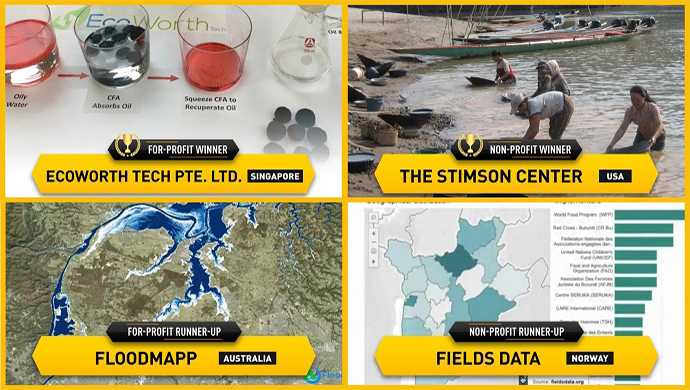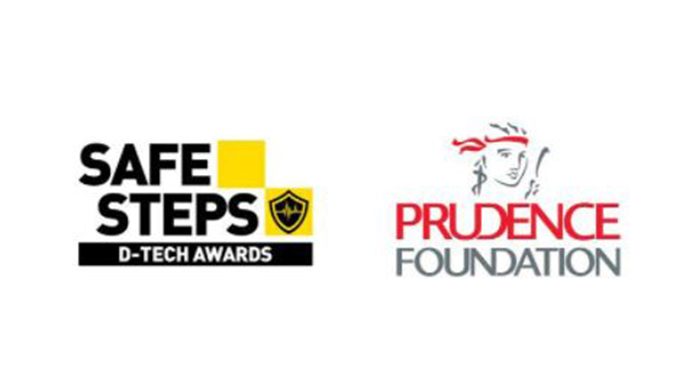
The impact that digital technology has on quality of life is distinct and far-reaching. Tech is especially pervasive in areas such as fintech, edtech, and medtech but its transformative power can be applied to more — such as building community resilience against disasters.
According to the World Disasters Report 2020, more than 100 disasters happened just in the first 6 months of the COVID-19 pandemic, and almost 52 million people have been hit by both the pandemic and climate-related disasters. The latest sixth assessment report by the Intergovernmental Panel on Climate Change (IPCC) has also revealed one particularly concerning finding: that many changes due to past and future greenhouse gas emissions are irreversible for centuries to millennia.
There is a pressing need for innovative and effective solutions to tackle these critical environmental challenges. The SAFE Steps D-Tech Awards is an initiative that recognises the role of technology in building community resilience. Closely aligned to the United Nations’ Sustainable Development Goal of Sustainable Cities and Communities, the awards are established to find, fund, and support technology solutions that protect and save lives before, during, or after natural disasters.
Recently, the 2021 SAFE Steps D-Tech Awards brought to the forefront 4 winners with tech solutions that are creating waves of change by building the resilience of communities to the onset of disasters. Singaporean startup, EcoWorth Tech, won the for-profit category while United States-based organisation, The Stimson Center, topped in the non-profit category. Meanwhile, runner-ups in the for-profit and nonprofit categories respectively were Australian startup, FloodMapp, and Fields Data from Norway.
EcoWorth Tech
Oil and chemical spills in oceans destroy marine life and can have long-term ecological impacts. Singaporean cleantech startup EcoWorth Tech is nipping this pain point in the bud with its Carbon Fibre Aerogel (CFA) sponge made from low-cost natural materials such as waste biomass, renewable cotton, or waste paper.
EcoWorth’s reusable CFA sponge is modest, but it is proving its might in solving serious issues like oil and gas decontamination, and industrial wastewater treatment. It can absorb up to 190 times its own weight and remove up to 99% of organic liquid contaminants such as grease, solvents, dyes, fats, and oils from wastewater. Once the CFA absorbs oils or other organics, it can be squeezed out mechanically to recover and reuse the oils. The treated water is then safe to be released back into the environment.
Also read: Meet these 4 founders who are raising millions and redefining the way businesses are done
The company converts “waste to worth” to address big environmental issues of water scarcity, waste management and pollution. The strong problem-solution fit, potential to address the market at large and solid business model propelled EcoWorth Tech to the winning position in the for-profit category.
Good disaster technologies can be used again and again. EcoWorth Tech’s solution solves pain points across multiple industries including waste upcycling, oil spill response, oil refineries and wastewater treatment. For this startup, the scalability of CFA and the potential of converting other waste materials for its production signals a promising growth trajectory.
Stimson Center
The Stimson Center won the award for its Mekong Dam Monitor, an open-source online platform that uses remote sensing, satellite imagery, and social media to provide near-real time reporting of dams. The project is especially crucial to avoid the occurrence of upstream flooding that can cause millions of dollars in damage.
The Mekong River traverses 4 countries — originating in China, passes through Laos and Thailand, before meeting the South China Sea in Vietnam. Numerous upstream hydroelectric dams in China and Laos have caused water levels to plunge low causing water shortages, while tropical climate causes it to overflow dangerously at times leading to seasonal flash floods.
The unpredictability places great strain on the vulnerable communities in the region. By forewarning and providing 48 hours preparation time to adapt to any changes, the Mekong Dam Monitor helps mitigate potentially devastating loss of lives and livelihood in the instance of flooding. It works using publicly-available data inputs from the US’s Defense Meteorological Satellite Array and European Space Agency’s Sentinel Satellite Array. By feeding surface wetness information into an algorithm that models how the river would run without any dams, the Mekong Dam Monitor can forecast short-term droughts and floods.
But this project is also making great strides beyond its warning system. With its comprehensive data processing, the Mekong Dam Monitor is compelling upstream agencies to improve the transparency and accountability of its activities. In turn, this also gives downstream stakeholders or governments access to better data for negotiation of a fairer water share.
More importantly, the great success of the Mekong Dam Monitor lies in its scalability to other river basins around the world. As climate change leads to more severe weather events, wider use of this monitoring technology will help communities cope with floods and water scarcity. Overall, the Stimson Center looks to create greater impact by providing more citizen science opportunities and localising its products.
FloodMapp
Foresight is key to prevent emergencies and people from being stranded in flooding disasters. This Australia-based startup specialises in rapid real-time flood forecasting and flood inundation mapping. The technology confidently lets people know when and where floods will occur at each stage of a flood emergency — before, during, and after.
By providing warnings ahead of time, FloodMapp protects lives and reduces financial loss from damages. Globally, the annual flood damage amounts to $16.8 billion which FloodMapp claims can be prevented by buying time. Damage from floods such as power utilities and prolonged outages significantly affect livelihoods. Communities also face the risk of a devastating loss of lives, homes, buildings and other valuables.
Also read: How Australian scaleups are contributing to Singapore’s tech ecosystem
FloodMapp gives a 200X more granular view that looks at community and asset-level impact compared to other traditional flood models. Through visual mapping, users get an easy view of assets and locations at risk of flooding hours up to 10 days ahead of time. The data used come from trusted leaders like the Australian Government’s Bureau of Meteorology. Based on these data inputs, FloodMapp derives insights from its high-tech trained catchment hydraulic models, machine learning models and processed river systems.
With flooding predicted to displace 50 million people by year 2100, FloodMapp is solving a critical need to build a safer future and more resilient communities. The impact of FloodMapp’s forecasting technology has enhanced preparedness and risk mitigation; improved public safety by cutting supply of power to at-risk assets, protect communities from being stranded and prevent huge financial losses.
Fields Data
One big setback that humanitarian organisations experience is the lack of data-driven insights for effective decision-making. Despite the noblest intentions, not having enough data simply impedes good work. Some reasons for this data scarcity are tasks taking precedence over providing data, low connectivity in many areas of work and inconsistent updates.
Recognising this gap, Norway-based startup Fields Data collects and shares ground-level information about humanitarian and international development organisations in the form of 4W maps: Who does What, Where, and When. Its purpose is to empower organisations by providing tailored data-driven solutions to facilitate informed decision-making.
Fields Data collects data, processes, analyses and puts it together in dashboard form. Especially where public data can be scattered and unreliable, Fields Data facilitates partnerships, gives visibility to organisations working hard in the field, and helps organisations improve efficiencies. Currently, it covers over 450 organisations in Burundi and Ghana, with plans to expand to India.
The role of the tech community in disaster relief
The impact of COVID-19 reverberates across the world and only further highlights the growing vulnerability of people to disasters. Investments in D-Tech, especially in the Southeast Asian region, are picking up since building community resilience is now critical more than ever before.
Also read: Startup x Innovation Thailand Expo 2021: A virtual world of innovation
In a world of commercially oriented tech solutions, the climate crisis and global pandemic have showcased the use of technology to protect lives. D-tech startups in the emergency technology space have raised significant equity recently: US-based company, RapidSOS (US$85M) and Israeli startup, Carbyne (US$25M).
The vibrancy of D-tech is key to spur more innovators and entrepreneurs in the space for the greater good. As disasters and crises remain prevalent, concerted effort by the best minds in tech is vital to build resilience and safeguard communities.
Keen to know more about SAFE STEPS D-Tech Awards?

The 2021 SAFE STEPS D-Tech Awards was created by Prudence Foundation and supported by humanitarian partner, the International Federation of Red Cross (IFRC) and technology partner, Lenovo. The partners recognised potential in many solutions in different locations.
Winners and runners up will receive grants from a pool of US$200,000, of which US$150,000 came from Prudence Foundation and US$50,000 from Lenovo. Lenovo will also provide in-kind support for the winners and runners-up in both categories.
Find out more about the SAFE STEPS D-Tech Awards 2021 here.
The IFRC and Prudence Foundation are also hosting a webinar on 21 September at the upcoming World Economic Forum Sustainable Development Impact Summit 2021 titled “Advancing Technology for Community Resilience”. The webinar will highlight how technology can support communities to be more resilient, and discuss the barriers to scaling up innovation in this area. Sign up here.
– –
This article is produced by the e27 team, sponsored by Prudence.
We can share your story at e27, too. Engage the Southeast Asian tech ecosystem by bringing your story to the world. Visit us at e27.co/advertise to get started.
The post Tech-for-good: How 4 tech companies are gearing up for an uncertain future appeared first on e27.

